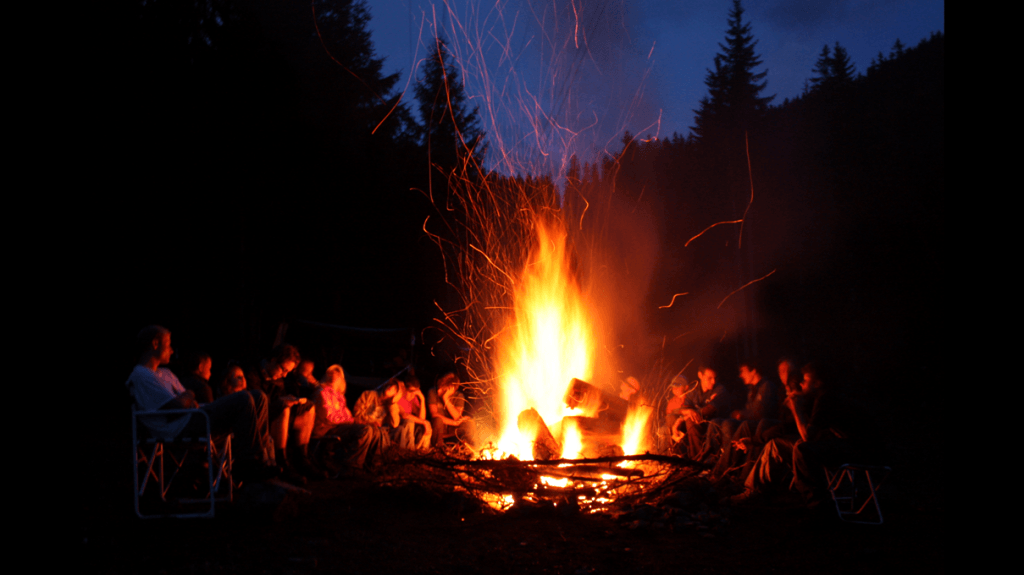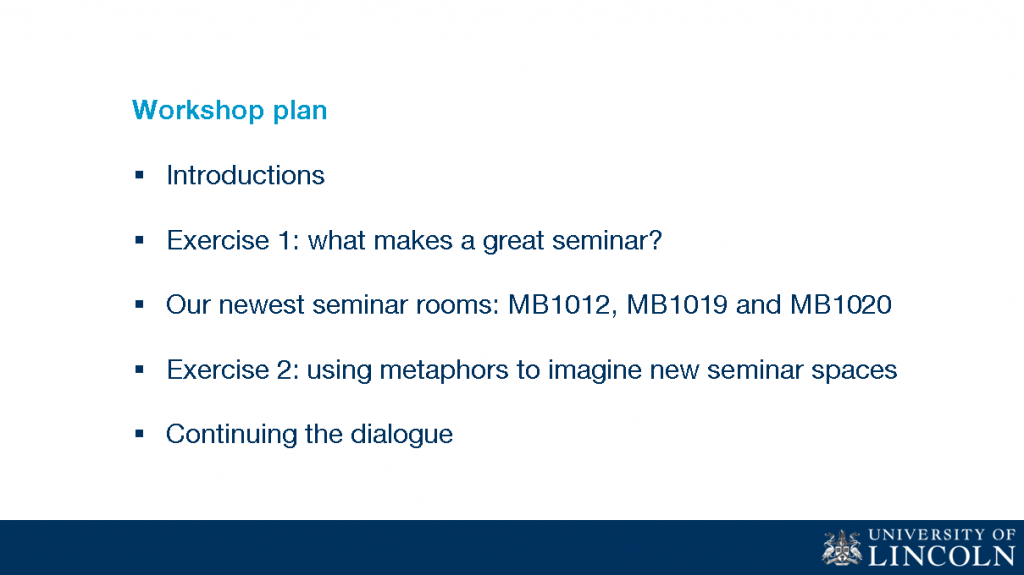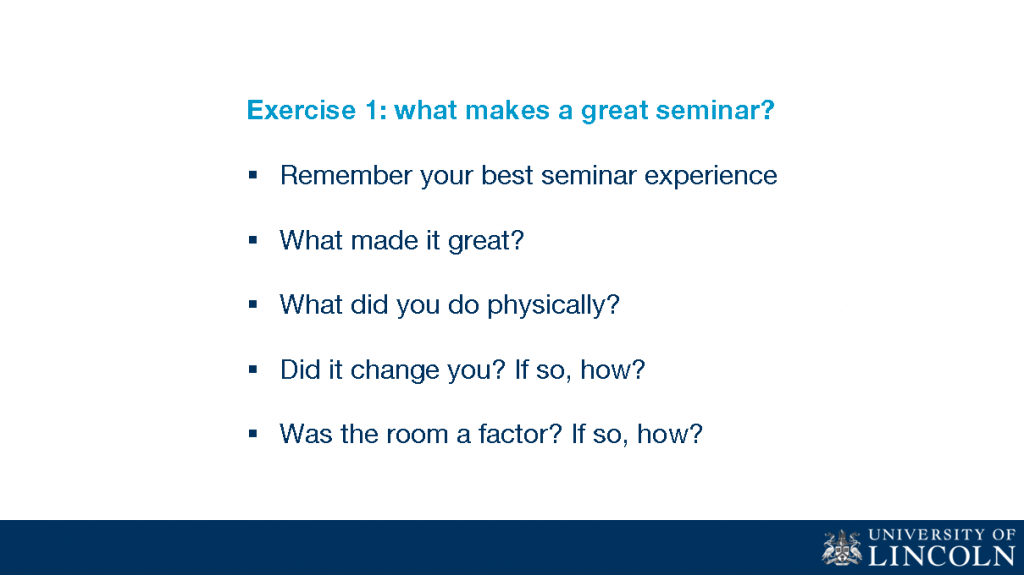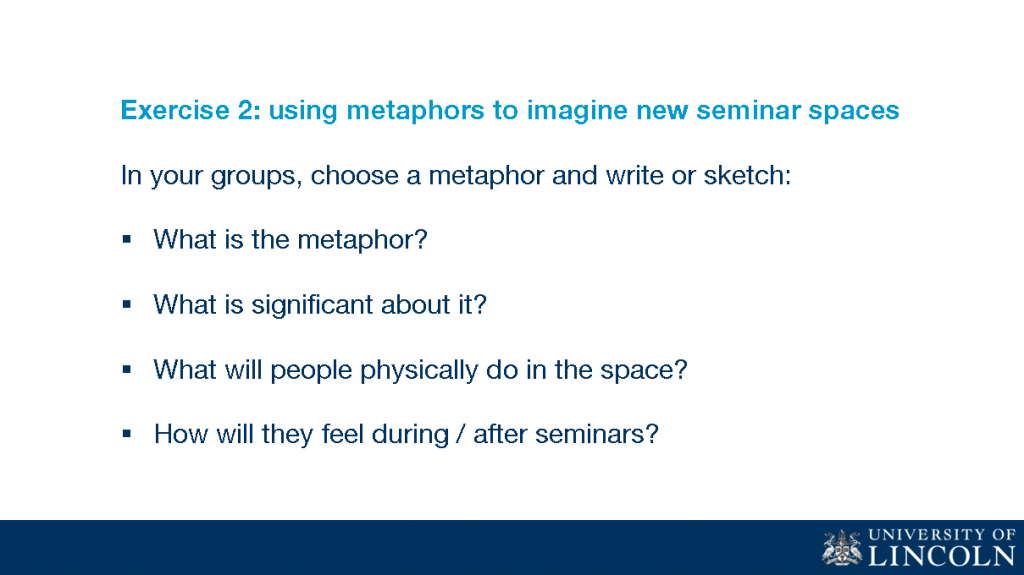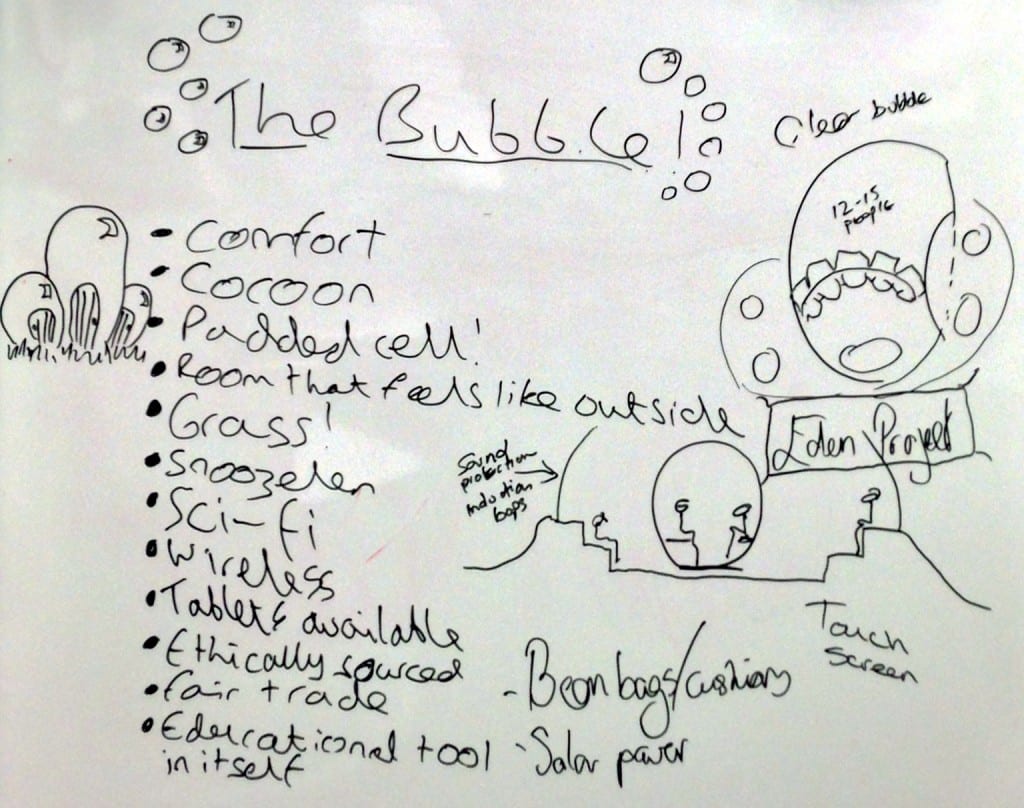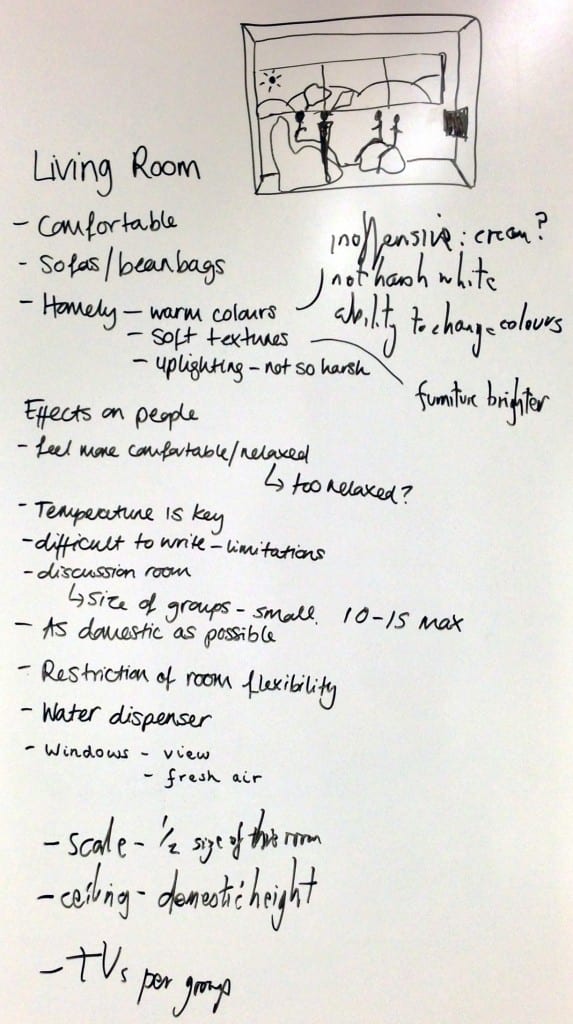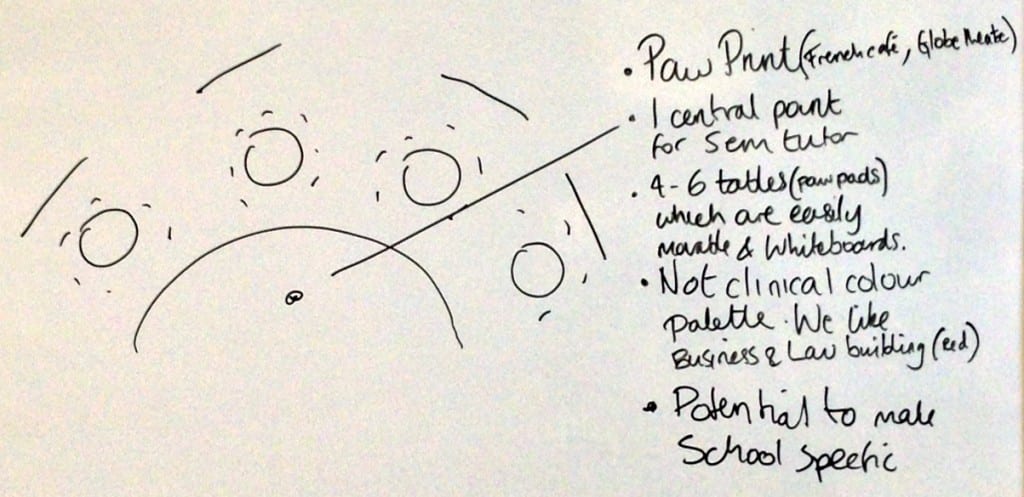We ran a workshop on seminar room design at today’s Student/Staff Conference, the theme of which was “The Future of Learning”.
We asked students and staff to imagine new seminar spaces by using memories and metaphors – a participative design approach we learned from Professor Peter Jamieson, learning spaces specialist at the University of Melbourne. We designed the workshop’s content in response to the workshop venue, MB1012 – one of the three new Student as Producer-inspired seminar rooms we introduced in the summer of 2012. We would alternate between briefings, small group exercises, and plenary discussions, taking advantage of the Node chairs and mobile whiteboards in MB1012.
After a round of introductions, we asked people to split into four groups, with a mix of students and staff in each group. We asked the groups what makes for a great seminar experience. Some of us found it harder than others to recall our most recent seminar experiences!
Everyone got involved, discussing their own experiences and documenting their thoughts on the whiteboards around the room. There was a great deal of commonality between the four groups’ responses, but each group had some unique views and insights – a great demonstration of the value of breaking into small subgroups.
So: what makes a great seminar?
- People talking!
- Open environment
- Acoustics
- Small groups
- Ease of movement
- Moveable furniture
- Flexibility of room
- Toys to play with!
- Ability to get involved
- No barriers: no desks at the front
- Good lighting
- Lecturer sat with us
- More participation
- Less distraction
- Group involvement
- Better understanding
- Appropriate temperature: not too cold
- Furniture design: flexibility
- Encouraging conversation
We set up the second exercise by explaining our design process for MB1012, MB1019 and MB1020, in which we had used a metaphor from outside higher education – something strongly advocated by Peter Jamieson as a way to bring fresh ideas into the design of HE learning spaces. When we started to design the rooms last year, we drew inspiration from the then-recently-completed McLaren Production Centre in Surrey – a facility characterised by small groups of people working on complex processes at multiple locations; an extremely configurable layout which enables the whole space to be rearranged rapidly; and a calming, neutral colour palette with few visual distractions.
We gave the four groups about 15 minutes to come up with their own metaphors for new seminar spaces:
The groups came up with four great concepts:
- The Bubble – a cocoon-like outdoor seminar space with transparent sides and ethically sourced components and materials
- The Living Room – a homely, relaxing place with sofa groups, table lamps, and televisions for each subgroup
- The Airport – a dynamic, technology-rich concourse where users move between various seating and standing zones
- The Paw Print – a sophisticated French café-like space with group tables arranged in an arc around a central focal point
Each group then explained its metaphor and design ideas to the others.
This was a fun process, and a great demonstration of the value of students and staff working together informally on a problem of mutual interest – not bad for 15 minutes’ work!
We think that each of the concepts generated at today’s conference contains some real value for the University’s development of future learning spaces, and we’re planning to do some work to develop these ideas for consideration by the Education Committee and the Student Experience Committee later this year.
If you have comments or questions about today’s workshop, or about learning spaces more generally, please let us know using the comments form below, or by tweeting @LincolnEstates. You can download the full workshop presentation here.
Thanks to everyone who participated today!

